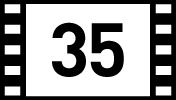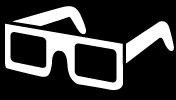

Where does one being when trying to explain how bad Martin Scorsese’s first foray into the 3D world is? I guess one could start with the first five minutes. The film blows its load with a lengthy opening that shows us the entire magical world of its 1930s Parisian train station where young Hugo Cabret maintains the clocks and other gadgets. Through the flying, untethered perspective of Scorsese’s camera/computer we see everything this world has to offer in the most spectacular tour-de-force way, leaving nothing for the rest of the film’s 115 minutes. It’s almost like this opening was created so that people can use it to demo their new 3D TVs and home cinemas for their friends without then having to sit through the rest of the movie. This sequence is awful because it runs so counter to the character it is suppose to be introducing us to. Hugo is a boy who traverses this world and tends to these clocks day after day out of routine--there is nothing magical about this place from his perspective anymore. A deft storyteller would have shown us this world in a more restrained way at the beginning; focusing on the minutia of it--the things that are cool, but small. Then, half way through the film when Hugo shows this world to his new friend (Chloe Grace Moretz), the audience, and Hugo, would see this place through her eyes. Then we’d see how wonderful and magical and big and sweeping and grand it is. We’d actually get something new in the middle of the film and we’d be connecting with the two young protagonists as they discover and rediscover their world, rather than feeling like we’ve been there and done that.
The movie is all down hill from the opening on. It is terribly directed and horribly edited. Marty Scorsese and Thelma Schoomaker have always taken artistic license with the basic rules of editing--sometime to astounding effect--but they can’t get away with their choppy, jumpy style in this movie. Why don’t people realize that 3D films work best with fewer cuts, and the less the camera moves? When you have a 3D environment, you don’t need to cut around because there is so much to look at in the static frame. Of course, that means you really need to visualize how the film with play and this is something Scorsese has been less and less concerned with as his career has rolled on and his films have gotten longer and longer and choppier and choppier. It is as if he shoots a ton of footage and then waits to get it in the editing room before figuring out how to make it work. That’s a luxury one can’t afford in a film like this--which isn’t about rapid-fire conversations and violence cut to rock music. For a film like this to work, it must be lyrical, and Hugo is anything but.
There are dozens of scenes in this movie that could be done in one or two long shots, but instead they jump all over the place, changing perspectives in ways that make no sense. For example: why, when we are with Hugo hiding and spying on Sasha Baron Cohen’s Station Master character, do we cut away from Hugo and spend time in Cohen’s perspective? There is no reason other than an indecisive, unconfident director who knows his scene isn’t playing so he’s trying to punch it up. And what kind of response are we supposed to have to sequences like the early chase scene where the Station Master gets his artificial leg caught in the train gears--is it supposed to be comedic, scary, thrilling? Is this sequence supposed to set up how dangerous a place the station is or how much a non-threat Hugo’s primary antagonist is? I haven’t the slightest.
Worst of all, with its storyline about how this young boy rediscovers the great French film pioneer George Melies and reawakens his magic, Hugo is one of those films that pretend to honor the legacy of cinema, but really does nothing but piss all over it.




